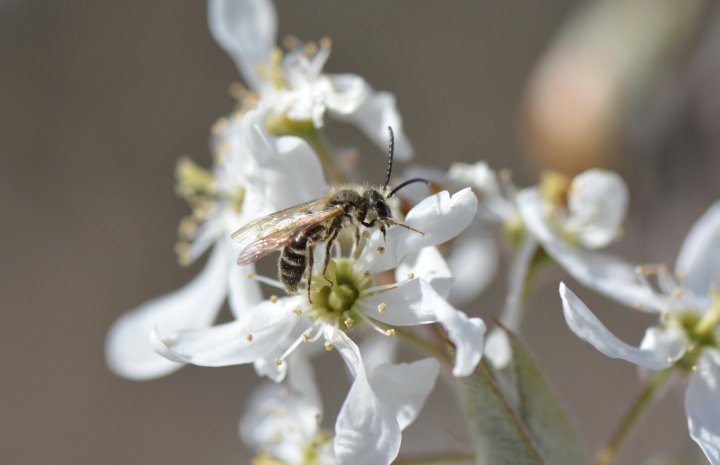Service Berry: Amelanchier species
One of our favorite small flowering trees and shrubs, the serviceberry has become a champaign of the native ornamental landscape. It has full season interest, early spring blooms, summer fruit and great fall color, making it a stunning edition to any garden.
Theirs a wide verity to choose from with both single stem and multi stem specimens. A good example of this plant’s diversity is Amelanchier canadensis, of the Eastern United State, which can reach 30 ft at maturity. Another example is Amelanchier alnifolia, the Saskatoon berry of the midwest which in contrast, is a medium sized shrub.
When ever I talk about Amelanchier, I like to explain its three most popular common names.
Serviceberry: derives from the colonial period where early settlers understood that when this plant flowered, the ground was soft enough to bury their dead and perform a service.
Shadbush: derives from Europeans noting that Native Americans used this plants bloom time as a sign that the Shad where soon to migrate up the Hudson.
Juneberry: quiet literally explains when the plant produces berries. Amelanchier flowers early and produces fruit early. The only other native plants producing fruit at this time are strawberries, some verities of raspberry and mulberries.
I have found that due to this species growing popularity, the proliferation of singular cultivars is producing weaker plants. This is most evident when you see thin foliage and more persistent fungal infections. Remember most cultivars are clones, genetically the same — all one plant. This makes them better targets for disease and environmental pressures. That being said the true species is much harder to find but just as beautiful. I’ve never seen one with bad flowers, fruit or foliage.
Amelanchier is also a very adaptable plant, capable of growing in a wide verity of sites and conditions. I’ve always seen them in very particular places in nature, whether it be on steep slopes in the Great Smoky Mountains or on the Mohegan Island off of the coast of Maine — they seem to like cool, moist air, direct sun and cool, well drained soil.
I’d recommend that if you use them as landscape ornamentals — protect the roots, make sure the soil is rich, well drained and fairly acidic. Shade the ground they grow out off but allow the crown of the tree or shrub to receive full sun. This can be achieved by planting lower shrubs several feet in front of your serviceberry, south facing, to create a cool soil surface area. Another option is plant serviceberries on the north facing side of a wall or short structure, which overtime will see the plant grow above and receive full sunlight.
This technique ‘hot up-top, cool down-below’ is great for more northern species planted in climates which can have hot summers, like New York City, the Mid-Atlantic and Coastal New England. American mountain ash, spruces, eastern hemlock and high bush blueberry are some good examples of plants that will thrive under these conditions.
Finally, the Amelanchiers benefit for wildlife can not be overstated. If you want native birds in your yard, this is the plant for you. Plant this near a window for endless entrainment and easy viewing, as birds will come flocking in upon the ripening of fruit in June.
Amelanchier in bloom
Photo by: Native Beeology 'A species of Andrena visiting a Serviceberry flower'
Photo by: Mackenzie Younger 'Cedar Wax Wings eating Amelanchier berries'



